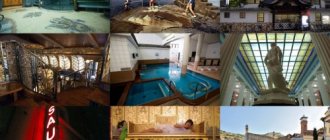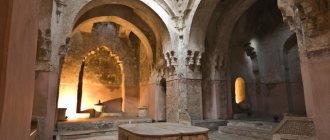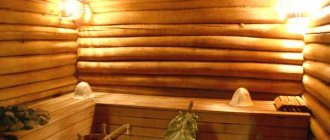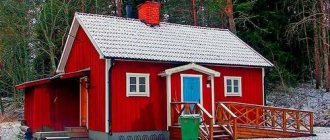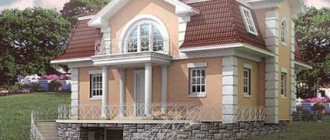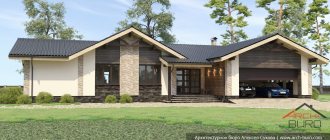Of all the ancient bath structures known to history, Roman baths are rightfully considered the most advanced in terms of process technology and service organization. When it comes to visiting the sauna, directly organizing procedures and relaxing in ancient baths, the Roman builders and keepers of bathhouses were the best. Even in a modern sauna or a simple Russian bathhouse, built according to all the requirements of construction science, it is not always possible to achieve the level of comfort and relaxation that was available in Roman baths for citizens of Ancient Rome.
Roman Baths is a whole health complex with baths and healing waters
What are therms
In terms of their structure, public baths in Ancient Rome consisted of several buildings combined into one complex, which had a huge main hall and up to a dozen smaller rooms, which, in fact, housed the ancient Roman baths, with steam rooms, saunas, swimming pools and treatment rooms . In a broad sense, baths in the Roman Empire were also a place where you could wash and clean yourself up, receive medical treatment and communicate with citizens. But this is not the main thing; in modern thermal baths you can often find a similar level of service, medical support for visiting the sauna.
The sauna replaced the club and served as a place for citizens to communicate
The main difference between Roman baths and modern saunas and steam rooms is in organizing the process of visiting the bath:
- The complex included rooms with different temperature conditions, there were wet hot steam rooms and relatively dry saunas, oriental “cool” baths and Arabic rooms with incense, several pools with water of different temperatures;
- The largest ancient Roman baths were heated by wood-burning stoves through the floor. There was no trace of combustion products inside the room, regardless of the weather and wind direction outside;
- A special heating mode, and public Roman baths were heated almost around the clock, maintained the most comfortable conditions inside the baths.
Each visitor had the opportunity to choose his own heating mode, moving from colder oriental hammams to a hot sauna. There was simultaneously access to several pools with different water temperatures. As a result of this organization of work in Roman baths, visitors, even with a minimal level of medicine, practically did not suffer from overheating, heat or contrast shocks.
Important! Particular attention was paid to ventilation. Roman baths were heated and ventilated by ducts built into the walls. Therefore, regardless of the weather and air temperature outside the bathhouse, the air inside the room was fresh and warm.
The main city baths were not inferior in size to palaces
The water in the pools and baths was changed at least once every three days. In terms of sanitation, the baths in Ancient Rome were an order of magnitude better compared to Turkish, Arab or ancient Jewish baths.
The reason for the incredible popularity of the Roman bath lies in three simple points:
- Roman builders and architects are rightfully considered brilliant in matters related to architecture and planning of buildings, not only for baths or saunas. Ancient Roman baths have been copied for several thousand years and are recognized as the best;
- The baths in Rome were serviced by hundreds or even thousands of slaves and hired workers. Maintaining huge structures clean and tidy was possible only through slave labor;
- Huge amounts of money were spent on the construction and maintenance of bath complexes, materials that were best suited for constructing steam rooms and swimming pools were used.
In modern conditions, Roman baths would go bankrupt within a week after they were put into operation, but the layout of the premises, their structure and the organization of the process of visiting the sauna in Ancient Rome is still considered unsurpassed.
Roman baths from antiquity to modern times
Roman baths are a special part of the culture of Ancient Rome, which can still be fully enjoyed today. Roman baths in ancient civilization occupied an important place in the daily life of every resident. They are also called thermals. They were not only a place to wash, but also a place to live their whole lives. People gathered there to create and improve their health. They wrote poetry, drew, exercised and improved their well-being.
In Rome there were baths for all segments of the population. There were free options for the poor, and, of course, trimmed with gold and marble for the rich. In the 5th century AD e. there were already about 900 bathhouses in the city. And the population was two million inhabitants. In addition, the Roman bath could accommodate 3,000 people and was characterized by low temperature and high humidity. All this information was collected and deciphered using frescoes in which the Romans described in detail the entire process of the steam room in the bathhouse. What was the structure of the Roman baths, and what attracted local residents to them so much?
Palaestra
The palaestra is a special gymnasium, which is a must, since a visit to the bathhouse began with physical activity. The exercises were easy to warm up. Their main goal is to make a person train their muscles and sweat a lot. Such exercises included running, wrestling, ball games, swimming, boxing and fencing for the very active Romans.
Apodytherium
The apodytherium, or dressing room, was the next point after the palaestra. It was a room with shelves and benches. Residents put their personal belongings on the shelves. Rich residents left their servant to guard them, since things were unattended and there was a possibility that they would not be found after visiting the bathhouse.
Tepidarium
Next, visitors to the bathhouse moved to a warm room or “tepidarium.” There they lubricated the skin with Caracalla oil. This product replaced soap in those days. Next, it was cleaned off with metal scrapers. Then they did a massage and epilation for absolutely smooth skin. After carrying out all the necessary hygiene measures, visitors went to take a dip in the warm pool.
Caldarium and Laconicum
After the pool, the Romans moved to the hottest room with high ceilings. It was called caldaria. There were pools of hot water in which you could steam. Hypocaust stoves were used to heat the room and the pools themselves. There was also a room without a pool for dry heat - laconicum. The temperature there was about 75 degrees.
Frigidarium
After the steam room, visitors plunged into a pool of cold water in a room called the frigidarium. Here you could listen to music, watch actors play and dancers perform. In addition, here you could enjoy wine and various delicacies. This room was the final one in the bathing process.
The Roman bath is considered a great ancient technological invention. It had a full-fledged pipe system and space heating. The water used was thermal, that is, heated by nature to 35-40 degrees. In addition, there was a strict separation of baths for women and men.
We recommend buying pine brooms for the bath.
History of Roman Baths
The first bath complexes in Ancient Rome were built during the reign of Octavian Augustus. They were built at his own expense by a high-ranking official, Marcus Vipsanius Agrippa, a man far from the problems of Roman citizens, but undoubtedly smart and far-sighted. It was necessary to solve the main problem of the Roman troops and the population of the cities. Ancient Rome was periodically subject to epidemics of infectious diseases, especially the plague. Therefore, the construction of Roman baths became one of the ways to defeat the carrier of the disease, and after two to three hundred years, visiting the bathhouse became an element of ancient Roman culture.
Restored diagram of Diocletian's Baths
It is believed that the idea of Roman baths was borrowed from cattle breeders. In a country where there are plenty of volcanoes and mud thermal springs, the appearance of a bathhouse and the use of natural hot water for one’s own needs, processing and treating livestock was an inevitable phenomenon.
The largest Roman baths were built under Emperor Diocletian; the total area of the baths reached 13 hectares, and were designed for simultaneous visits of three thousand people. In fact, it was a whole palace made of marble and granite, with mosaics and sculptures. The elite of the Roman capital gathered and spent time in the Roman baths of Diocletian, therefore, in addition to the bathhouse premises, an amphitheater, sports and healing halls, a library and snack bars were built.
Important! The quality of the construction can be assessed at least by the fact that the water supply system installed in the Roman baths of Diocletian functioned properly without any mechanics for four centuries.
In fact, the baths themselves fell into disrepair after the partial collapse of the aqueduct and gutter system. The Roman baths were barbarically plundered and dismantled in the Middle Ages, in the middle of the 16th century.
Baths of Ancient Rome today
Part of the complex built by Diocletian has been preserved in the form of foundations and walls. The remains of the main building of the ancient Roman baths were used to strengthen the structure of Santa Maria del Angeli.
The rest of the buildings of the ancient Roman baths were less fortunate. Most of it was rebuilt according to modern designs, without preserving the unique walls and stoves. From some, as in the case of the largest Roman baths in history, Caracala, ruins remain in which the layout and structure of the complex can be traced. But even in this state, the Roman baths make modern experts marvel at the accuracy and thoughtfulness of the structure’s layout.
History of the term
Thermae are baths from the period of Antiquity, characteristic of the social life of Ancient Greece and Ancient Rome.
The first baths began to be built in the 3rd century BC. for the nobility. Ordinary Romans washed themselves in a small room near the kitchen, or in the Tiber River.
Later, public baths were built for different social strata of the population. The cost of such baths was minimal, and sometimes even free.
By the end of the 1st century BC. There were about 180 baths in Rome, and by the 3rd century there were about 1000.
The area of some thermal centers reached more than 100 thousand m².
The heating system for the large space involved heating the furnace with oil, heating water and air that circulated in the walls and under the floor.
Ancient Roman engineers created special cavities between the walls to retain heat for a longer period, and the floors were covered with an additional layer of bricks and clay for comfortable walking.
Huge bath complexes included rooms with different temperature conditions, baths, places for reading, relaxation and communication.
The beautiful interior and interior design of the space were decorated with marble columns, sculptural compositions and mosaic works.
The following rooms were distinguished in the Roman baths:
- Apodyterium (apoditherium) - locker rooms. A dressing room, where there were usually benches, cabinets, bedside tables and hooks for “street” clothes. After this room, visitors could choose from a variety of rooms and amenities where to go next.
- Palaestrae (palasters) – gyms. Places for exercise and sports.
- Frigidarium (frigidarium) - a cool room, without heating the room and the water in the pool. Often frigidariums were luxurious monumental halls and were the heart of the complex.
- Tepidarium (tepidarium) - a warm room, with relative heating and a cool pool. Smaller in size than a cold room.
- Calidarium (caldarium) - a heated hot room in which a pool of hot water was located. Caldariums were richly decorated, with huge windows serving as a source of sunlight and heat.
- Steam rooms : laconium - steam rooms with dry steam; Sudatorium - steam rooms with wet steam.
- Notatio – large outdoor swimming pools.
- Bio-fireplace – special places for sunbathing.
- Rooms for massage and other wellness treatments.
- The large baths even had libraries, an amphitheater, meeting rooms, laundries, sun terraces and outdoor gardens.
Roman baths were used for both entertainment and medicinal purposes.
For example, special milk baths were created for Pompeii (Nero’s wife), for which donkey milk was used, which has a rejuvenating effect.
The premises were always clean and well maintained; thousands of workers kept order every day.
The opening of the baths was accompanied by the beating of drums to notify all citizens.
Romans taking baths - engraving.
Modern Roman baths
Ancient Roman baths are often copied for large bath complexes. A Roman bathhouse in a truncated form can be found in Sanduny, at the famous resorts of Gellert or Gedyk Pasha.
Modern baths differ from the baths built under Diocletian in almost all respects:
- Due to energy saving, the dimensions of the complex do not exceed the dimensions of a standard bathhouse. The finishing uses only imitation marble and granite, and heating is provided by electricity controlled by a computer;
- The number of rooms, as a rule, is limited to two or three; there is a sauna and steam room with a cooler temperature;
- In modern Roman baths there are practically no medical procedures or medical practices.
In fact, a modern Roman bath is a classic steam room with a sauna, decorated in the style of the luxury of the Roman emperors. To attract visitors, thermal baths are built next to thermal or medicinal water sources.
The first Roman baths and their features
History highlights the first baths on the territory of Rome, which were enormous in size and belonged to emperors and famous personalities.
Let's look at some of the most popular...
Baths of Agrippa
The first “great baths” acquired their name in honor of the founder, Marcus Vipsanius Agrippa.
Agrippus was a statesman, a famous commander and a relative of the Emperor Octavian Augustus.
History of the first sauna center:
- The creation of the complex dates back to the 1st century AD and coincides with the construction of the first Pantheon.
- At first, the baths were rooms with dry steam, but after Agrippa completed the construction of the water supply - the Aqueduct, a water supply was connected to the baths.
- After his death, the emperor's heir bequeathed the baths to the people for free use.
- In 80, the first baths suffered a fire, after which they were restored.
- Under the reign of Martial and Hadrian, the baths expanded significantly and experienced their peak.
- In the 7th century, the complex was destroyed and used as building materials.
- The ruins of the ancient landmark were sealed with buildings by Andrea Palladio and Baldassare Peruzzi.
Today they can be seen on Via dell'Arco della Ciambella.
Ruins of the thermal baths on Via dell'Arco della Ciambella.
Baths of Titus
The bath complex in honor of Emperor Titus was built in the 1st century AD, on Esquiline Hill, near the Golden House of Nero.
The structure was significantly damaged as a result of attacks by barbarians and Goths.
In 238, reconstruction work was carried out on the site of the baths.
In addition to the main rooms, the baths had rooms with a library and a theater.
To this day, only the ruins of the majestic structure have survived, showing the full scale and former luxury of the architectural structure.
The plan of the bathhouse building is sketched on the canvases of Andrea Palladio, and the interior decoration can be seen in the paintings of Fabulla.
The granite bowl, found on the territory of the Baths of Titus, is kept in the Belvedere Palace of the Vatican.
The ancient monument is located on Via delle Termi di Tito, 100 meters from the Colosseum.
The ruins of the baths next to the Colosseum.
Baths of Trajan
The construction of the bathhouse dates back to the 2nd century AD during the reign of Emperor Trajan.
The structure was located on the site of the burnt palace of Nero, next to the Baths of Titus.
The occupied area of the thermal baths was about 100 thousand m².
Under the large-scale complex, during excavations, underground passages were discovered, along which the bathhouse staff moved.
You can see the famous baths along Via delle Terme di Traiano.
Ruins of the thermal baths along Via delle Terme di Traiano.
Baths of Caracalla
The huge spa was built in the 3rd century AD under the leadership of Marcus Aurelius Antoninus Augustus, better known as Emperor Caracalla.
The bath center occupied an area of more than 110 thousand m² and in appearance resembled a real palace building.
In the Baths of Caracalla, in addition to the main bath rooms, there were:
- theater Hall;
- Gym;
- massage rooms;
- street terraces;
- sports stadium;
- picturesque gardens.
The surviving ancient ruins are located along Via delle Terme di Caracalla.
Top view of the ruins of the Baths of Caracalla.
Baths of Diocletian
The cultural recreation center, with an area of 130 thousand m², was built in the 4th century AD under Emperor Diocletian.
At the site of architectural remains today:
- The main room building has been converted into the Basilica of Santa Maria degli Angeli e dei Martiri.
- In one of the remaining baths there is the Roman National Museum.
- On the site of the former bathhouse is the Basilica of San Bernardo alle Terme.
The main Roman railway station, Termini, is located not far from the Baths of Diocletian, after which it took its name.
Baths of Diocletian.
Baths of Constantine
The construction of the bath complex dates back to the 4th century under Emperor Constantine I the Great and is one of the last large-scale public baths in Rome.
Baths of Constantine in its modern form:
- The Exhibition Palace (Palazzo delle Esposizioni) was built on the site of the main hall.
- In one of the main parts of the baths is the Consult Palace (Palazzo della Consulta).
- Some parts were destroyed as a result of the construction of the Via Nazionale.
- The remaining details represented a swimming pool, steam rooms and library rooms.
In modern times, archaeologists have discovered only the northern part of the ancient Roman baths, the southern part is kept in the ground.
The baths are located next to the Rhone River, not far from the Amphitheater.
Baths of Constantine - illustration.
Design and mechanism of operation
The Roman bath, built according to the classical design, has three types of rooms for bath procedures. Firstly, this is a tepidarium, in which the air is heated to 40°C with low humidity. Visitors enter here from a separate locker room and undergo acclimatization.
Heating system for sauna rooms
Secondly, it is a slightly hotter caldarium, at 50°C and 100% humidity. In fact, this is an analogue of the Turkish hammam. Next comes laconium at 80°C and 15% humidity, this is a real sauna.
There is also a room for relaxation and massage and an extension to the sauna - a frigidarium, which has at least two pools, with cold and warm water.
The original Roman baths were heated by a separate stove; hot air was blown through natural draft through channels in the walls, so inside the sauna or even tepidarium there was always clean air, without the smell of insulation or old water and condensation on the walls.
Answers to crossword of the day No. 22603 from Odnoklassniki
22602 22604
Horizontally: - Cacophony in the orchestra pit - Balance in accounting - A call to reel in fishing rods - A business card on the back of a football player - The distant past of the Crimean peninsula - A bandage applied to a wound - Who studies linguistics - The “flammable” butterfly - The frog from Teremok - The reverse of the rearguard - Monumental piece of music – “The Tale of Lost Time” (actor) – Goalkeeper’s guard post
Vertical: - Anagram for the word "amigo" - Russians, Bulgarians and Ukrainians (general) - Change the letters in the word "flock" - Sea game fish - Who discovered the sea route from Kamchatka to America - Philippine volcano - Soviet relative of "Kodak" - The pressure of the attackers - Corel, Excel, Word or Photoshop - European state - "ARTIFICIAL" worker - Artificial floor covering - Artificially grown copy of the organism - A piece of cut fat - Parable - Abraham's wife and Isaac's mother
DISSONANCE - 1. Violation of harmony, euphony, simultaneous sound of two or more dissonant tones (in music) (opposite: consonance). 2. transfer That which does not correspond, contradicts something, brings discord, disrupting harmony.
BALANCE - 1. Balance. // The art of maintaining body balance when performing exercises on objects or keeping various objects in balance. 2. A certain ratio - usually in quantitative terms - of parts, sides of something. phenomenon, process, smb. activities, etc. 3. Form of financial statements, which is a summary table of indicators, in monetary terms characterizing the state of funds - assets and liabilities - of some kind. institutions, enterprises, etc. // Comparative total of income and expenses.
BALANCE - 1. Logs of specific sizes used to make pulp and paper.
BALANCE - 1. A part of a clock mechanism in the form of a ring with a crossbar that regulates its movement.
ATAS - colloquial. Security guards posted to warn of danger.
NUMBER - 1. The ordinal number of an object in a series of other homogeneous ones. 2. Something designated by a certain number in order. 3. Bar, label, plaque, piece of paper, etc. with the image of a number (as a document, registration mark, inventory of an institution, etc.). 4. Size of some. item (clothing, thread, etc.). 5. A separate room in a hotel, bathhouse. 6. A separate completed performance by an artist in a pop concert and circus performance. // An independent, complete vocal, dance or instrumental episode in an opera, operetta, oratorio, ballet. 7. transfer decomposition An out-of-the-ordinary act, an incident.
BANDAGE - 1. A narrow piece of fabric, a ribbon that is tied around something. body parts (belt, arms, head). 2. An ancient women's headdress in the form of a wide ribbon, fastened or sewn at the back and often decorated with something. (embroidery, beads, etc.). 3. A piece of cloth that is tied to the sore spot; surgical bandage. // A device that holds a diseased part of the body in a desired position or attaches a dressing to it. 4. A piece of fabric on the sleeve as a sign of something.
LINGUIST - Specialist in the field of linguistics; linguist.
KVAKUSHKA - people's poet. 1. Decrease to the noun: frog. 2. Affectionate. to the noun: frog.
VANGUARD - 1. Part of the ground forces or fleet, located in front of the main forces and protecting them from enemy attack. 2. The advanced, leading part of society, smb. public group. 3. decompression The same as: avant-garde.
ORATORY - A musical work for choir, orchestra and soloists, written on a dramatic plot and intended for concert performance.
ORATORY - A part intended for worshipers (in a Catholic church).
GATE pl. 1. A wide entrance or passage in a fence, wall, etc., locked with gates; gates, doors for locking the entrance or opening during passage and passage. // transfer The city through which economic, cultural, etc. are carried out. some kind of connection country (region) with other countries (regions). // transfer An area located in close proximity to a city, region, etc. // Sluice gates used to hold water at a certain level. // Passage for ships between rocks, shoals, etc. 2. Two posts with a crossbar, a fence in the form of an arc and a net where the ball, puck, etc. is directed. (in some sports games). 3. The place of entry and exit from something. organ blood vessels, lymphatic vessels, nerves, etc. (in medicine).
SLAVS pl. 1. One of the largest groups of peoples related in language and culture in the eastern and central parts of Europe and in the Asian part of Russia, making up three branches: East Slavic (Russians, Ukrainians, Belarusians), West Slavic (Poles, Czechs, Slovaks, Lusatians) and South Slavic ( Bulgarians, Serbs, Slovenes, Macedonians). 2. Representatives of this group of peoples.
AORTA - The main artery of the circulatory system of humans, mammals and birds.
STAURID - 1. Marine commercial fish of the order Perciformes. 2. The meat of such fish is eaten. 3. A dish prepared from the meat of such fish.
CHANGE - 1. Action according to value. verb: to change, to change, to be replaced, to be replaced. 2. Part of the day during which work is performed by a certain group of people, replaced after this time. // The period of time after which the composition of workers, vacationers, etc. changes. 3. A group of people doing something. work, vacationers, etc. and after a certain period of time replaced by another group. 4. transfer The younger generation, which must replace the elders with something. work, at some field. 5. A set of clothes and linen, changed periodically.
PRESSURE - 1. Strong pressure. // Swift attack, pressure. // transfer Pressure, influence on someone, something. 2. The pressure of the type or cliché on the paper when printing. // A bulge on the back of the paper caused by strong pressure from the typesetting or cliché.
PROGRAM - 1. Someone's plan. activity, content of some kind. work. // A set of actions and measures to implement something. 2. Preliminary sketch, plan of a literary work. 3. Brief summary of the content of the academic subject, course, etc. // Brochure, book with such a presentation. 4. Content of concerts, circus performances, radio and television programs. // Such programs, shows, performances themselves. 5. The theme of a painting given to a student at the Imperial Academy of Arts. // Painting, drawing on a similar topic. 6. Literary presentation of the theme of an instrumental piece of music. // The theme of the instrumental piece itself. 7. Description of the algorithm for solving the problem in computer language. 8. outdated List of foods; menu.
ACTRESS - Female. to noun: actor.
CLONE - 1. Genetically homogeneous offspring formed as a result of asexual reproduction (in biology). 2. Same as: cloning.
SHMATOK - up-down Piece, flap, clot.
APOLOGIST - A short allegorical moralizing narrative from the life of animals, close to a fable.
Pros and cons for the body
The classic Roman bath is free from the main defect of modern steam rooms and saunas. If attended correctly, there is no risk of heatstroke or overheating of the body. Therefore, bath procedures are very effective for neuralgia, muscle tightness, fatigue and physical exhaustion. The immune system is definitely strengthened and metabolism improves.
Important! Ancient Roman baths were widely used to restore the strength and tone of legionnaires. In addition to traditional steaming and sauna visits, soldiers were forced to stretch, dislocations were reduced, and injuries were shunted. In the ancient Roman army, special people were responsible for the process of treatment and rehabilitation, and wages depended on how many people were returned to duty.
Bath procedures are strictly prohibited for infectious diseases, oncology and vascular problems.
There are also negative aspects to visiting a Roman bath. By design, the thermal baths remain “cold” and are designed for warm climates. Therefore, in winter you can easily get a cold from a draft.
Roman sauna: visiting rules
In general, it took from one and a half to two hours to take a steam bath in the ancient Roman baths. In Ancient Rome, it was believed that visiting the bathhouse should occur after completing business and always before lunch. Therefore, the second half of the day was reserved for the nobility, and the morning and late evening for the common people.
Having left his clothes in the locker room, the visitor headed to the apodyteria. This is a place to sit, chat with friends, and psychologically adapt to stress. Regulars of the bathhouse often immediately went straight to the tepidarium, this is a room with a warm and fresh atmosphere; they spend at least 10-15 minutes in it until their breath gets used to the atmosphere of the bathhouse.
The next stage is the caldarium, where they wash with hot water, then move on to the frigidarium with a swimming pool. Often a visit to the Roman baths, especially in hot weather, ends with a conversation and relaxation by the water. For those who like to exercise, there is a choice of a sauna or a more moderate steam room. You can stay in each for no more than 10 minutes.
The procedure ends with a rest in the tepidarium. In the ancient Roman bath there was a special person who monitored the condition of visitors and, if necessary, could provide assistance.
Preserved Roman baths and saunas in Bath, UK
Roman Baths today
Architectural monuments preserve their history both in closed buildings and in the open air.
The National Roman Museum displays collections of preserved ancient artifacts discovered as a result of excavations at the sites of ancient baths. Among the finds are marble details from sculptures and decorative elements.
The remaining huge ruins on the streets of Rome are witnesses to the grandiose bath masterpieces of Ancient times, which are open to the public in modern times.
(Source - myVideoMedia).
DIY Roman steam room
It is quite possible to build real ancient Roman baths, although the costs in terms of space and materials will exceed the estimate for a regular sauna at least twice. In fact, you will need to design two whole bathhouses under one roof with a swimming pool:
- To heat steam rooms, saunas and colder hammams, you will need to make two separate electrical circuits. Moreover, for a hot sauna, heaters are placed under facing ceramic tiles, both on the floor and on the walls of the room;
- In both steam rooms it will be necessary to make separate thermal insulation, ventilation and install an air heating control system;
- Between the sauna and hammam, a small isolated room for washing is traditionally left;
- The recreation room can be combined with a pool room.
When building Roman baths, you can use a water boiler with gas heating. It will be quite difficult to heat a sauna and at least one swimming pool using electricity alone.

